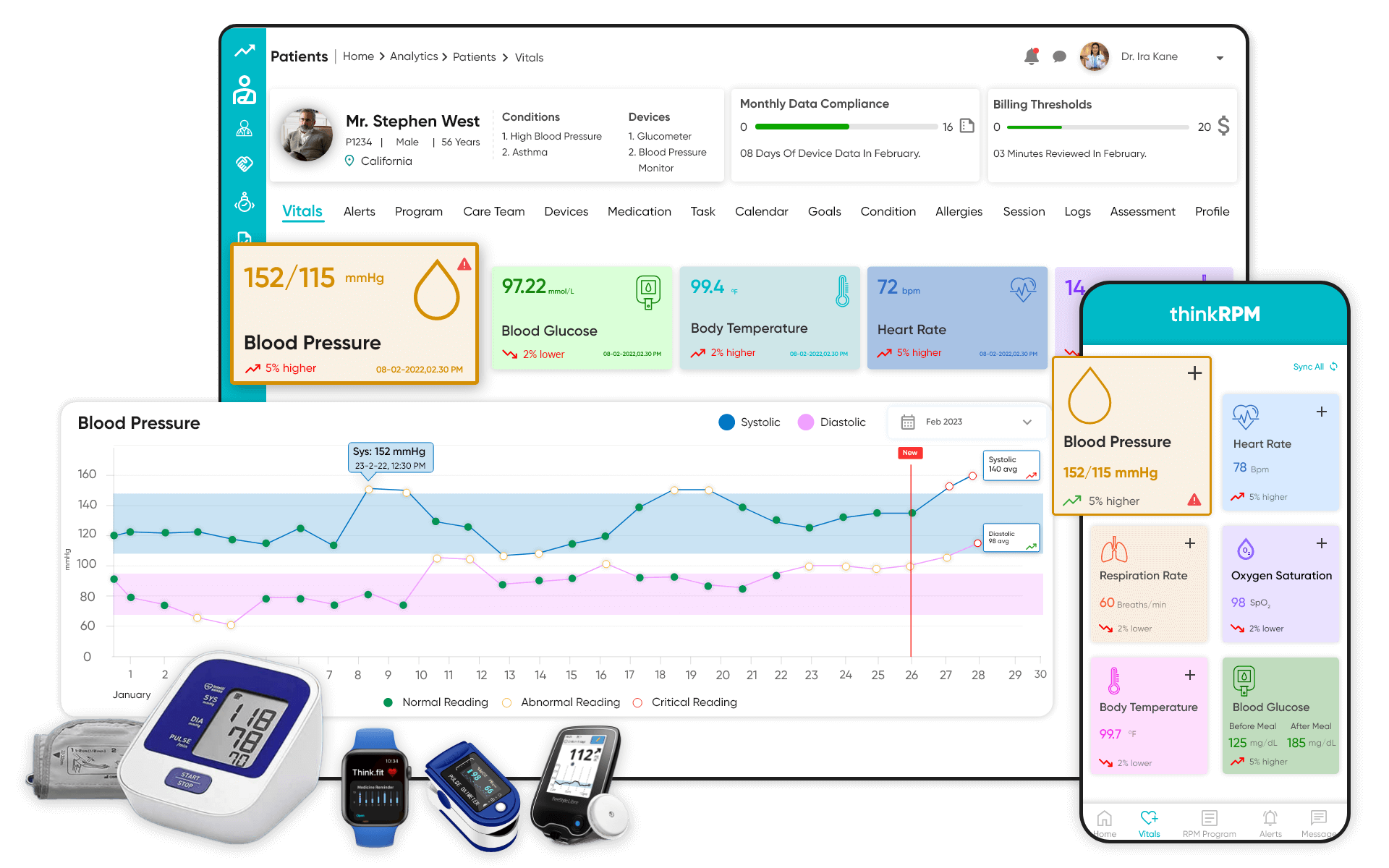Choosing the Best Remote Patient Monitoring Software: Secret Considerations
The Future of Healthcare: Remote Individual Monitoring Streamlined
As health care remains to develop, one area that holds tremendous promise is remote person surveillance. The idea of simplifying this process via technical advancements is improving the means care is provided and gotten. With a concentrate on boosting person results and improving health care shipment, remote monitoring is positioned to transform the industry. By checking out the benefits, technological technologies, and future fads in this area, we can get useful insights right into the transformative potential of remote client monitoring.
Advantages of Remote Patient Surveillance
Remote individual surveillance presents a wide range of benefits for both medical care providers and patients alike. Additionally, remote individual surveillance boosts the general quality of care by providing a much more detailed and holistic sight of clients' health status past conventional in-person check outs.
Moreover, remote patient tracking can lead to better client outcomes and complete satisfaction. Remote tracking can decrease the need for constant medical facility sees, lowering healthcare costs for both suppliers and people.
Technology Driving Remote Tracking
In the world of contemporary healthcare, technological improvements play a critical role in driving the evolution and performance of remote patient surveillance. The combination of innovative innovations such as wearable tools, mobile applications, and cloud-based platforms has actually revolutionized the means medical care carriers remotely handle and check client wellness - rpm software. These innovations allow continual real-time surveillance of crucial indicators, drug adherence, and various other essential wellness data, permitting prompt treatments and individualized care strategies
One secret innovation driving remote tracking is the Internet of Points (IoT), which allows seamless connection in between medical gadgets and medical care systems. IoT devices such as smartwatches and cordless sensing units accumulate and transmit patient data to centralized platforms, helping with remote surveillance from throughout the globe. Synthetic intelligence (AI) and artificial intelligence algorithms additionally boost remote monitoring by assessing vast quantities of individual information to discover patterns, predict health fads, and alert doctor to potential concerns.
Effect On Health Care Distribution
With the assimilation of sophisticated innovations driving remote individual monitoring, the effect on medical care shipment is coming to be transformative and significantly profound. Remote individual monitoring permits doctor to offer even more positive and individualized care to individuals, resulting in boosted health and wellness end results and lowered healthcare facility admissions. By remotely tracking vital signs, signs and symptoms, and medicine adherence, health care specialists can intervene early, stopping complications and boosting the total top quality of treatment.
Additionally, remote monitoring improves access to medical care services, particularly for individuals in country or underserved locations. People can get continuous monitoring and support from their homes, getting rid of the need for frequent in-person brows through. This not only saves time image source and reduces prices for both people and healthcare centers yet likewise decreases the threat of direct exposure to contagious diseases, a critical factor to consider in the current health care landscape.
Additionally, remote person surveillance enables health care companies to far better assign resources and prioritize treatment based on real-time information. By determining high-risk individuals and stepping in promptly, medical care delivery becomes a lot more reliable and efficient, inevitably resulting in a more lasting and patient-centered healthcare system.
Improving Client Outcomes

Additionally, RPM permits proactive monitoring of persistent conditions, lowering the likelihood of intense exacerbations and healthcare facility readmissions. Patients take advantage of increased convenience and convenience, as they can receive care in their very own homes while remaining connected to their medical care service providers. This continual monitoring not only boosts client satisfaction but additionally fosters a feeling of empowerment and involvement in their very own health and wellness management.
Future Trends in Remote Monitoring
Welcoming cutting-edge modern technologies in remote client monitoring is forming the future landscape of health care shipment. The future patterns in remote tracking are anticipated to reinvent the method health care is supplied, making it much more patient-centric and efficient. One significant trend is the raised use of wearable tools and sensing units to accumulate real-time data, allowing health care service providers to keep an eye on individuals continuously without the demand for regular in-person brows through. These devices can track vital signs, drug adherence, and activity levels, giving a comprehensive view of the person's health condition.

In addition, telehealth systems are coming to be a lot more innovative, permitting virtual examinations, remote diagnosis, and remote person monitoring all in one integrated system (best remote patient monitoring software). This all natural method to remote tracking is improving medical care shipment, link boosting individual contentment, and inevitably, boosting overall quality of treatment
Verdict
In final thought, remote individual tracking uses various advantages in medical care shipment, driven by developments in modern technology. It has the prospective to boost person outcomes and reinvent the method health care is supplied. Future trends in remote tracking will remain to form the landscape of health care, giving opportunities for more reliable and customized patient treatment.
Remote person monitoring provides a multitude of advantages for both health care providers and clients alike. Additionally, remote client monitoring enhances the total quality of treatment by providing a much more thorough and alternative sight of patients' health condition past traditional in-person visits.
In addition, remote patient monitoring can lead to better client outcomes and complete satisfaction. Remote patient monitoring permits health care service providers to supply more tailored and aggressive treatment to patients, leading to enhanced health and wellness results and decreased healthcare facility admissions. Remote person tracking (RPM) plays a substantial duty in boosting individual end results by offering continual, real-time data that allows medical care carriers to intervene without delay and adjust therapy plans as required.